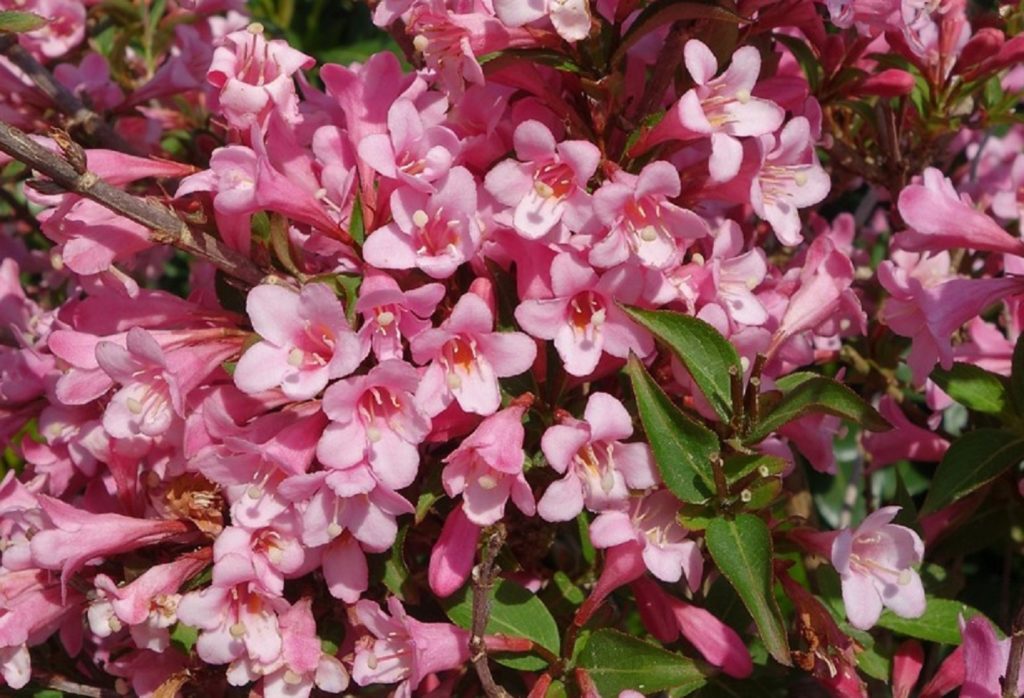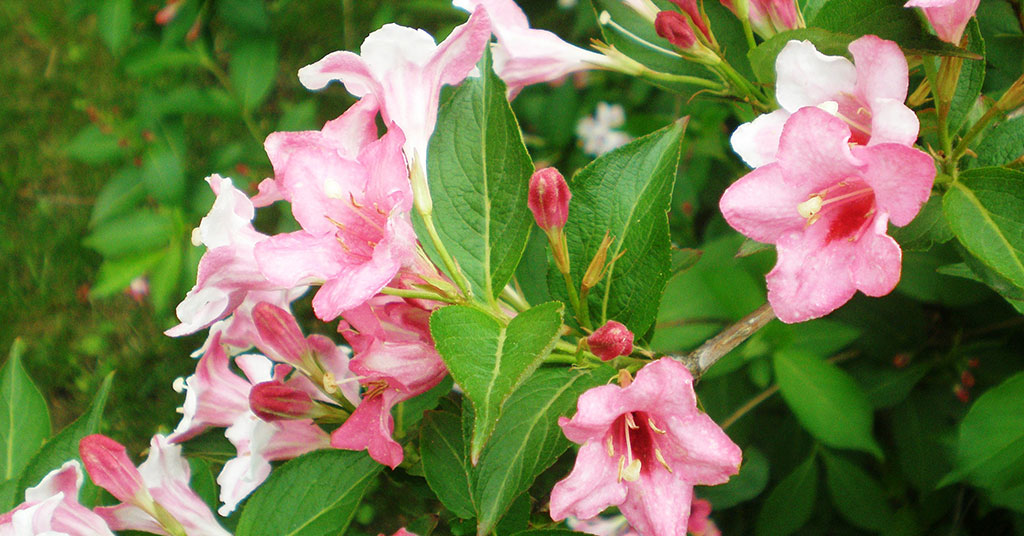This vintage beauty has occasional blooms throughout the summer and spring. Weigela requires little upkeep. Weigela is a robust and hardy shrub, thus taking care of it entails planting and watering a growing weigela in the appropriate location.
What is Weigela?
Although they rank one or two tiers below more familiar species like lilacs, azaleas, and rhododendrons, weigela bushes are traditional landscaping favorites. New weigela varieties propelled a well-deserved return for these shrubs, which are relatives of the honeysuckle family and have become a popular option in attractive landscaping. Weigela bushes, which are native to Asia, are dense shrubs that expand at a reasonable rate, frequently gaining between 13 and 24 inches in height per year. Their vivid green foliage and little flowers, which blossom in early summer and can draw hummingbirds and butterflies to your garden, are best sown in early spring or late fall. Weigela florida is the most widely grown variety, though there are other varieties.
Here are some brief facts about the popular aesthetic plant:
- Latin name: Weigela florida
- Other names: Weigela bush, weigela
- Native to: Asia
- Invasiveness: No
- Tenderness: Herbaceous perennial
- Sun: Full sun to partial shade
- Water: Once a week
- Soil: Moist but well-drained
- Hardiness zone: 4–8
- When to plant: Early spring
- Spacing: 60 inches
- Plant height: 6–10 ft.
- Bloom period: Spring, early summer
- Time to maturity:
- Container friendly: Yes
- Fertilizer: Balanced
- Toxicity: No
- Drought tolerant: Yes
- Deer resistant: Yes
- Pest resistant: Yes
How to grow Weigela
The plant is generally low-maintenance and will reward you with light pink blossoms in late spring and early summer. In the late spring when they are in flower, these shrubs can be used as specimens and make ideal foundation plants. The greatest specimens are those with multicolored foliage, dark leaves, or golden leaves since those colors maintain their beauty throughout the spring and summer months (as opposed to only when they are in flower).
Weigela bushes have a strong ability to draw hummingbirds as well as butterflies. For summertime privacy in the landscape, privacy-lovers may want to plant several of these bushes in a row to make a hedge.
Your plants can probably tolerate some afternoon sun or dappled light if you live somewhere with particularly hot summers, but they should not be grown in complete (or even partial) shade because they might not flower.
Although your weigela shrub may take a range of soil conditions, a mixture that is damp but well-draining will be ideal for it. Make sure your weigela bush has space to spread out above and below the soil’s surface without crowding other plants or bumping into any obstacles when you plant it in a location that can support its eventual growth.
Additionally, a soil mixture with a pH level between 5.5 and 7.5 that is somewhat acidic or alkaline will work best for your weigela shrub.
As your weigela shrubs become established in your landscape, they will require regular deep waterings. It is uncommon to actually need to water the plant after that, though. Once they reach adulthood, they can usually get all the water they require from sporadic rainfall.
Weigela bushes should be fertilized once a year in spring, just before the plant begins to sprout new foliage. To do this, you can either use a balanced liquid fertilizer or slow-release pellets.

Growing Weigela in containers
Create a hole that is 2–5 times as broad and has the same depth as the root ball. Blend 15-20% manure into the backfill after breaking up the dirt. Pull out the roots or cut the root ball multiple times if the plant is root-bound. Place the plant in the hole, filling the hole just beneath the top of the rootball with backfill; do not cover the stem or the top of the rootball with soil. Deeply hydrate, then mulch with organic material that is not stuck to the stem. Water consistently till it becomes established.
When to start Weigela seeds
June (softwood cuttings) and the end of the growing season are the two ideal seasons to root weigela cuttings (hardwood cuttings). Most shrubs can be grown in the same way, however, some require hardwood rather than softwood cuttings.
When to plant Weigela
The optimum time to plant is during the cooler spring or fall months to prevent transplant shock from the intense summer heat.
How to collect Weigela seeds
Weigelat’s seed pods should be cut and put in a paper bag after that. Place the bag in a good, well-ventilated room once more until the seeds are completely dry.
Dry seeds crack when you prick them with your fingertip. If the seeds are squishy, they are not sufficiently dry.
To empty the contents of the packet onto a pie dish, crack open the pods. Remove any substantial stem, petal, or leaf portions.
Put the weigela seeds in a paper envelope. Mark the package with the name of the plant, the date, and the color before storing the seeds until you sow them during the following growing season.
Wildlife attracted by Weigela
Hummingbirds and butterflies particularly love the tube-shaped, multicolored blossoms of Weigela.
Common problems
Weigela bushes are more resistant to pest infestation than many other ornamental shrubs, but aphids, spider mites, and scale insects can still cause them some trouble. Immediately treat the plant with a natural insecticide or horticulture oil like neem oil after spotting an infestation. To get rid of pests from the leaves, you may also give the plant a strong watering, but be aware that if the blossoms have just emerged, you run the danger of damaging them.
How to prune Weigela
Pruning is not always required because most growers prefer the natural form that weigela plants take. If you decide to prune, wait until right after the bush has finished blooming for the year. This is due to the fact that these shrubs blossom on old wood, therefore the longer you wait to prune after the flowering time is ended, the higher the likelihood that you will remove flower buds and rob yourself of flowers the following year.
When does Weigela bloom?
It has a sparser rebloom in the summer and fall, mid-late spring. With the exception of some pruning and watering, this traditional deciduous shrub is practically carefree and produces abundant clusters of blooms throughout the spring.













